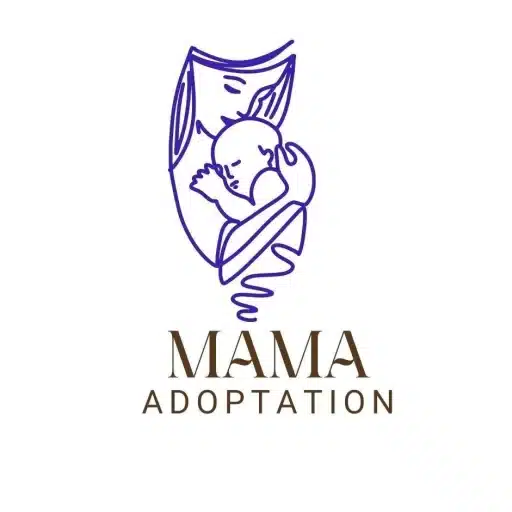When the test line is darker than the control line, indicating that you are pregnant, this is known as a dye stealer pregnancy test.
- Understanding Pregnancy Tests:
- What is a dye stealer pregnancy test?
- What Does A Dye Stealer Mean?
- Why Does A Dye Stealer Occur?
- What Does It Indicate About Your Pregnancy?
- Progress of the Pregnancy Test
- Potential Causes of a Dye Stealer:
- Can You Get A Dye Stealer While Pregnant?
- What Is The Pregnancy HCG Level?
- Conclusion
- FAQs
Pregnancy tests, with their straightforward lines or digital displays, provide a window into one of life’s most important events. The “dye stealer,” however, is a less common occurrence that can happen when taking a pregnancy test. If you’ve come across this phrase online or after analyzing your test results, you might be curious as to what it means and whether it indicates a healthy pregnancy.
Expectant moms frequently question the importance of a dye stealer pregnancy test, particularly if it’s their first. There may be concerns, such as whether it signals twins or whether the baby’s health could be impacted by the elevated Human Chorionic Gonadotropin (hCG) levels. We’ll discuss common misconceptions about the dye stealer pregnancy test in this post, explain what it means, respond to frequently asked questions, and outline how to interpret it. Let’s go deeper to discover more!
Useful Link: Symptoms of Pregnancy – What are Early Signs
Understanding Pregnancy Tests:
Let’s understand the fundamentals of pregnancy tests before delving into the idea of a dye stealer:
Human Chorionic Gonadotropin (HCG) Detection: The majority of pregnancy tests function by identifying the hCG hormone in a woman’s urine. This hormone is created during pregnancy and acts as a sign that an embryo is present and growing.
Test Line and Control Line: There are normally two lines on pregnancy tests: the test line and the control line. The test line shows if hCG is found in the urine, while the control line appears when the test is operating as intended.
Read Also: Invalid Pregnancy Test | What are the Causes
What is a dye stealer pregnancy test?
The term “dye stealer pregnancy test” refers to a specific pregnancy test result, typically on an early response or digital test. Two lines normally appear on a standard pregnancy test: a control line (which shows the test is working properly) and a test line (which appears if you are pregnant). When the test line gets darker or more pronounced than the control line, this is known as a dye stealer.
What Does A Dye Stealer Mean?
On a pregnancy test, a dye stealer is a positive result. The test line appears darker than the control line, indicating that your pregnancy hormone (hCG) levels are high enough to saturate the dye in the test. This is usually a comforting sign of a developing pregnancy.
Read Also: What Does a Blank Pregnancy Test Mean
Why Does A Dye Stealer Occur?
When your hCG levels are high and rising early in pregnancy as is typical, a dye stealer happens. It’s encouraging that your pregnancy is progressing and that your body is creating enough hCG, which is necessary for sustaining a pregnancy.
What Does It Indicate About Your Pregnancy?
A dye steal is a good indication. It implies that your pregnancy is developing normally. It’s crucial to remember that the strength of the test line can range between various brands and varieties of pregnancy tests. As a result, a dye stealer that seems the same in one test may not be in another. The test line on the same test must be darker than or equal in darkness to the control line.
Progress of the Pregnancy Test
A progression of pregnancy tests is a series of tests performed over days or weeks to track the progress of a pregnancy. The test lines’ shifting intensities allow us to track this process. At first, a thin line could show up, signifying a low hCG level. The test lines get darker and more obvious as the pregnancy progresses and the hCG levels rise. When using tests with different sensitivity, pregnancy test progression might offer helpful information about how a pregnancy is developing. It’s critical to keep in mind that the appearance of any test line, regardless of how minute, indicates pregnancy. It can be reassuring to monitor the development of your pregnancy test if you do so.
Potential Causes of a Dye Stealer:
A dye-stealing pregnancy test might result from several different factors:
Gestational Age: The higher your hCG levels get as your pregnancy progresses, the older you are. As you get further along in your pregnancy, a dye stealer is more likely to happen.
Twin or Multiple Pregnancy: In some circumstances, a dye stealer may be a sign of twin or multiple pregnancies because the hCG levels in these circumstances are frequently greater.
Miscalibration: On occasion, a dye stealer can happen as a result of the test’s sensitivity or miscalibration. Results from using various test brands could vary.
Dilution of Urine: Your level of hydration will have an impact on the amount of hCG present in your urine. Lighter test lines could be the consequence of diluted urine.
Time of Day: Because urine is more concentrated in the morning following a night’s sleep, hCG levels may be somewhat higher in the morning.
Miscarriage and pregnancy complications: Declining or fluctuating hCG levels might occasionally be an indication of a miscarriage or an ectopic pregnancy. Always seek quick medical assistance if you suspect pregnancy-related concerns.
Medication and Health problems: HCG levels may be impacted by specific medications or medical problems. Any worries should be brought up with your healthcare professional.
Can You Get A Dye Stealer While Pregnant?
When you are pregnant, it is possible to have a dye stealer result on a pregnancy test. When your hCG levels—the pregnancy hormone—are quite high, a dye stealer usually happens. As your pregnancy grows and your body continues to create more hCG, this may occur. It’s vital to keep in mind that the strength of the dye stealer does not indicate the health or viability of the pregnancy itself, even if it is an exciting and encouraging indicator of a healthy pregnancy. It only denotes the existence of significant hCG levels, which is a typical and anticipated aspect of a growing pregnancy. Consider a dye stealer result as a comforting indicator and seek advice from your healthcare provider.
What Is The Pregnancy HCG Level?
During pregnancy, the placenta produces a hormone called human chorionic gonadotropin (hCG). Throughout a pregnancy, the hCG level might vary significantly, however, there are some broad guidelines:
Early Pregnancy: HCG levels normally vary from 5 to 50 milli-international units per milliliter (mIU/mL) throughout the first few weeks of pregnancy. These levels increase quickly, roughly doubling every 48 to 72 hours.
Mid-Pregnancy: HCG levels typically reach their peak around week 12 of the first trimester, ranging from 12,000 to 60,000 mIU/mL.
Late pregnancy: HCG levels tend to stabilize and may even modestly drop during the second and third trimesters. They normally stay within the 3,000–50,000 mIU/mL range.
It’s crucial to remember that the absolute hCG level might vary significantly and that a single measurement might not be adequate to assess the pregnancy’s health. The pattern of hCG level fluctuations over time, which should ideally show a consistent rise in early pregnancy, is more important.
Conclusion
A positive result on a dye-stealing pregnancy test means that you are pregnant. It denotes growing hCG levels, which are often indicative of a healthy pregnancy. It’s a joyful indication that you are indeed expecting if you get a dye stealer result. To ensure a safe journey through this unique period of your life, it is always advised to follow up with a healthcare practitioner for prenatal care and confirmation of your pregnancy.
Useful Link: Dollar General Pregnancy Tests (Accuracy, Effectiveness, & Cost)
FAQs
Is a dye stealer an accurate pregnancy indicator?
Yes, a dye stealer is a good sign of pregnancy because it denotes increased hCG levels. It does not, however, offer details regarding the condition or likelihood of the pregnancy.
When can you expect to see a dye stealer result?
As your pregnancy advances, often several weeks into it when hCG levels are noticeably raised, a dye stealer is more likely to happen.
Is a dye-stealer a good sign of a healthy pregnancy?
Yes, a dye stealer often indicates increased hCG levels, which is a good sign of a healthy pregnancy. It does not, however, offer details regarding the pregnancy’s overall health or viability.
Does a dye steal indicate the presence of twins?
No, not always. While a dye stealer may show greater hCG levels, which may be indicative of a twin pregnancy, it does not prove that twins are present. Typically, an ultrasound is required to confirm many pregnancies.
What causes the hCG levels to change throughout pregnancy?
Gestational age, numerous pregnancies, urine dilution, time of day, and differences between various pregnancy tests are a few factors that can affect hCG level swings.
What causes the hCG levels to change throughout pregnancy?
Gestational age, numerous pregnancies, urine dilution, time of day, and differences between various pregnancy tests are a few factors that can affect hCG level swings.
What does a faint pregnancy test line mean?
Typically, a thin line on a pregnancy test shows the presence of hCG, but at a lower level. Typically, it denotes an early pregnancy, and as hCG levels increase, the line should grow darker.
What does a pregnancy test evaporation line indicate?
A pregnancy test may occasionally show an evaporation line, which is a colorless or gray line that occurs after the advised reading period. It’s not a positive result and should be disregarded.
What does a pregnancy test’s hook effect mean?
The hook effect is when the test is saturated by abnormally high hCG levels in the urine, producing a false-negative result. It is a rare occurrence and is typically unimportant for the majority of pregnancies.
What symptoms indicate increased hCG levels?
A darkening of the test line on pregnancy tests, nausea and breast tenderness, and an enlarging abdomen can all be indicators of rising hCG levels.
What does the control line mean on a positive pregnancy test?
When a pregnancy test is functioning properly, the control line, which serves as a reference line, should be visible. It shows that the test was carried out correctly.
Why does your pregnancy test come back positive in the morning but negative at night?
Results from pregnancy tests can differ depending on how much hCG is present in your urine. Because morning urine is frequently more concentrated, a more sensitive test may be able to identify hCG that an evening urine test would not be able to.
How soon can a pregnancy test show a positive result?
A pregnancy test can be positive as early as 7 to 10 days after conception, though the precise timing can change depending on the individual and the test’s sensitivity.
When should a dye-stealing pregnancy test be performed?
When hCG levels are anticipated to be noticeably raised, which is several weeks into pregnancy, you can undergo a dye stealer test. The precise timing, however, may differ from person to person.
How are dye stealer pregnancy tests conducted?
Follow the guidelines in your pregnancy test kit to do a dye stealer test. The usual procedure is to gather a urine sample, attach it to the test strip or other gadget, and wait the advised amount of time before interpreting the results.
Should a pregnancy test be performed in the morning or the evening?
Because urine is more concentrated in the morning following a night’s sleep, it is often advised to take a pregnancy test in the morning.
What time does the hCG concentration peak?
The end of the first trimester (about week 12) is usually when hCG levels peak and the second and third trimesters may see a stabilization or modest decline.
How can I increase my hCG levels with food?
There is no particular dietary strategy to raise hCG levels. During pregnancy, emphasize eating a balanced, wholesome diet to support general health.
Is it possible to lower hCG levels before a test by consuming water?
Yes, drinking a lot of water before a pregnancy test can lower the level of hCG in your urine, which could impact the test’s outcome.
Can a drop in hCG levels occur without resulting in a miscarriage?
HCG levels may occasionally fall or plateau, however this does not always signify a miscarriage. To ascertain the cause, monitoring and contact with a healthcare professional are required.
Does everyone receive a pregnancy test with dye stealers?
No, not every person who takes a pregnancy test encounters a dye stealer. The sensitivity of the test being utilized and the person’s hCG levels will determine this.
Do any medical issues have the potential to impact hCG levels during pregnancy?
HCG levels may be impacted by specific diseases and drugs. For a thorough assessment, it’s critical to address any worries or symptoms with your healthcare physician.








